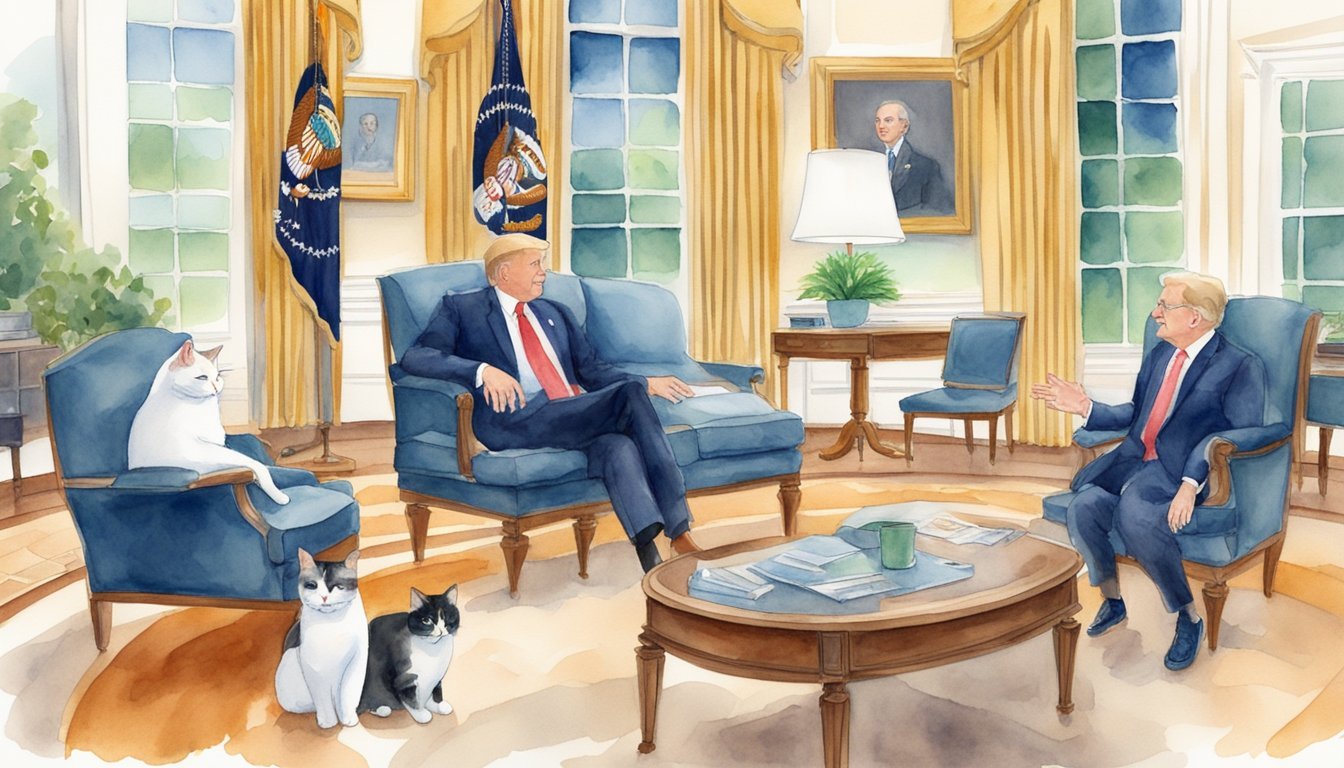Presidents and Their Feline Friends
Many U.S. Presidents have had a penchant for pets, and cats have held a special place in the White House throughout history. From Abraham Lincoln’s beloved Tabby to the more recent feline companions, these pets have provided comfort and companionship to America’s leaders.
Historical Presidential Cats
Abraham Lincoln was notably the first president to bring cats into the White House. He owned several cats during his presidency, with Tabby being one of his favorites to the extent that it is reported his wife, Mary Lincoln, was asked after the president was seen feeding Tabby with a gold fork at a White House dinner. Theodore Roosevelt also shared the executive mansion with several pets, including a cat named Slippers. Slippers, known for its six toes, was just one among a diverse menagerie that roamed the corridors of Roosevelt’s White House.
It was under President Rutherford B. Hayes that the White House received its first Siamese cat, named Siam. This cat was a gift from David B. Sickels, an American diplomat posted in Thailand, and it introduced the breed to the American public. The arrival of Siam at the White House was a significant moment in White House history, marking a continuing tradition of presidential pets.
Contemporary White House Cats
Shifting to more recent times, the White House Historical Association speaks to the varied roster of presidential pets that have included cats in modern history. While dogs have often been the more visible presidential pets, cats have quietly played their part behind the scenes. Although details on the contemporary feline inhabitants of the White House might not be as widespread, their influence and presence within the walls of 1600 Pennsylvania Avenue is well-documented.
For instance, one of the last known feline residents was Socks, the cat of President Bill Clinton, who became a popular figure and could often be seen navigating the grounds with confidence. Cats may not always be at the forefront of White House pet history, but their subtle influence and endearing antics remain a cherished part of the presidential living quarters.
Cats as Part of First Family Life

Throughout different administrations, cats have played an integral role in the first families’ lives, offering companionship and even contributing to the public image of White House occupants. From beloved felines like Socks to the recent addition of Willow, these pets have had unique care and influence under the nation’s most famous roof.
White House Cat Care
The care of presidential pets carries a significance that parallels the importance of White House operations. First cats such as India, who was part of George W. Bush’s family, and Socks, beloved by the Clintons, have been bestowed with exceptional attention by both the presidential families and the staff. A dedicated team ensures their well-being, coordinating everything from their diet to vet visits, often shielding the pets from the inevitable stresses of life in the White House.
First Cats and Their Influence
The presence of first cats often extends beyond mere companionship to impact the public’s perception of the presidential families. Socks became a symbol for Bill Clinton’s administration, frequently appearing in the media alongside President Clinton, Hillary, and Chelsea. These feline members sometimes participate in official duties or events, exemplified by the Biden’s cat Willow, whose presence reinforces the administration’s compassionate and relatable image. Starting with the tradition of the first cat, these animals have continued to humanize the presidency and facilitate a connection between the first families and the public.

